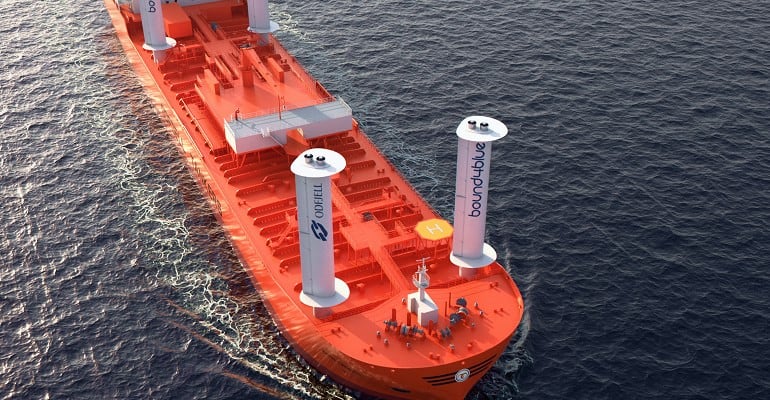
For the moment, providers of wind assisted propulsion system (WAPS) technology may be focusing on the vast retrofit market. However, leading developers of WAPS believe that wind installations will also become a standard feature of ship designs in the future.
In a recent podcast, David Ferrer, Chief Technical Officer and co-founder of bound4blue, a Spanish suction sail developer, told Seatrade Maritime News that it is only a matter of time until significant numbers of commercial vessels will be designed and built with WAPS installations. Many more will be built ‘wind-ready’ so that systems can be easily installed in the future, he said.
His comments align closely with those of Kim Diederichsen, Chief Executive of Anemoi, a UK-based WAPS technology spin-off from Greece’s dry bulk owner, Blue Planet Shipping Ltd. He told Lloyd’s Register’s Horizons magazine recently that WAPS has now come of age and, as well as being widely adopted as retrofits, is likely to come as standard on many future ship designs.
Certainly, the WAPS sector is gaining momentum, attracting interest not only from owners and operators but also from charterers. The Brazilian mining giant, Vale, is to install five 35m by 5m folding rotor sails from Anemoi on board the 400,000dwt ore carrier, Sohar Max, in a few months’ time. The vessel, owned by Oman’s Asyad Shipping, is on a long-term charter to Vale.
Anemoi sails have already been installed on the 82,048dwt TR Lady, a Kamsarmax bulker owned by a company controlled by London-based Tufton Investment Management and time-chartered to US food corporation, Cargill. Three transverse rail sail systems were installed earlier this year on the 2017-built bulk carrier at Chengxi Shipyard in China. The installation was class-approved by Lloyd’s Register.
Meanwhile, Norway’s Odfjell Tankers is preparing to install a bound4blue eSAIL® system on board one of its chemical tankers this year. The installation, likely to be made on the 2019-built Bow Orion, will be the first WAPS to be retrofitted on board a tanker.
